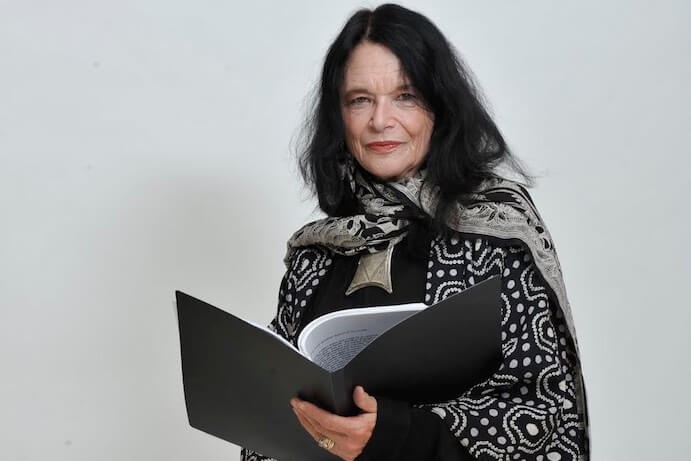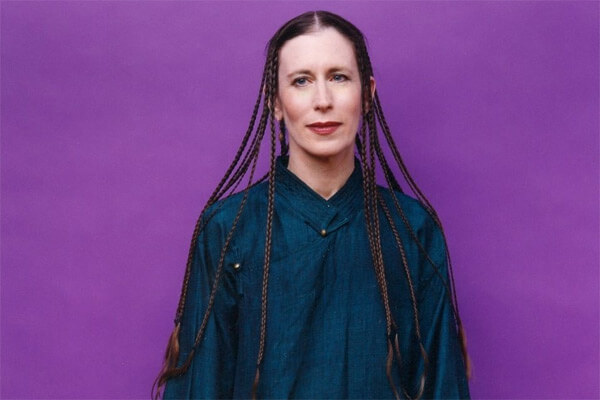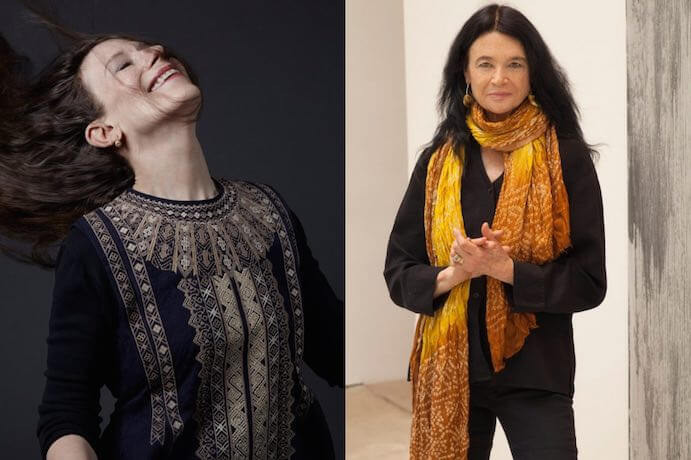On Friday, December 18, 2015, Danspace Project — a forum for experimentation in choreography — presented a collaboration between two iconic artists, each of whom uniquely personify a kind of synthesis of the legendary and contemporary New York City art scene. Composer, singer and choreographer Meredith Monk and poet Anne Waldman combined forces in a three-part performance piece, which delicately trickled over the open floorspace of St. Mark’s Church-in-the-Bowery with carefully measured and elegant sparsity.
Waldman opened with a solo reading of an in-progress work called Entanglement Variations. Set against a projected backdrop of dripping waterfalls by New York-based painter Pat Steir, Waldman emoted dedicatedly, her actions cantilevered by a red, three-ringed binder from which she read and sang with a fluidity suggestive of Steir’s images. Her words elicited occasional chuckles from the surrounding audience, but stayed sharp as she evoked primordial collective memories of the building blocks of language and our ability to speak. Waldman’s words and vocalizations found further support by a series of well-crafted sonic tapestries arranged by Waldman’s son, Ambrose Bye, with whom Waldman co-founded Fast Speaking Music, a jazz and literary-centric record label based in New York City.

Anne Waldman
Monk next emerged, embedded in a trio of vocalists including Katie Geissinger and Allison Sniffin, both regular collaborators. Monk’s compositions, including works entitled Calling, Scared Song, Cellular Songs (in-progress), between song and The Tale seemed to hover and haunt the air over the group’s delicately stepped choreography, which emanated clearly from the music along another axis, adding further dimensions. In one instance, the group (performing at a stand-still from behind a small array of keyboard instruments) was joined by artist Ellen Fisher, who sprang out of a chair in the audience and moved about the stage in a ritualistic, trance-induced pattern, before vanishing again into the crowd. The beautiful simplicity of the staging was at once effective, practical and stunning. Carol Mullins’s gentle and dynamic lighting provided a unifying element to the three sections of the performance, keeping it alive and connecting one passage to the next. Liltingly choreographed movements set the majority of the tone, as in one instance when each singer stepped variably forward or backward, creating an undulating line that ebbed and flowed with an evolving three-part harmony that was both fresh and familiar, suggesting but not entirely inhabiting an Early Music aesthetic. Cutting through the often somber tonality was a pervasive light-heartedness, summarized in Monk’s jovial The Tale, which felt suspended between a Stephen Foster inspired hoedown and comedia dell’arte.

Meredith Monk
After a brief pause, Monk and Waldman joined forces directly, pairing Monk’s vocal compositions with short poems by Waldman. To say one accompanied the other would be overlooking the elegant synergy the two achieved: one emerging from the other alternately, informing the direction and subtle structures that evolved in movement and sound. The resulting piece felt symbiotic, the two being involved mutually and equally, interconnected and left vulnerable to chance, hearkening back perhaps to Waldman’s interactions with John Cage and both women’s dedication to the Shambhala sect of Tibetan Buddhism. While Waldman’s words at the opening of the evening did feel somewhat dated, perhaps too strongly grounded in that legendary world of the New York School and Beat poetry from which her voice emerged, the pairing of Monk’s and Waldman’s forces felt totally contemporary and shimmered with such vibrant life as to suggest that these heroes of literature and music are far from stagnant and anything but finished creating.




















